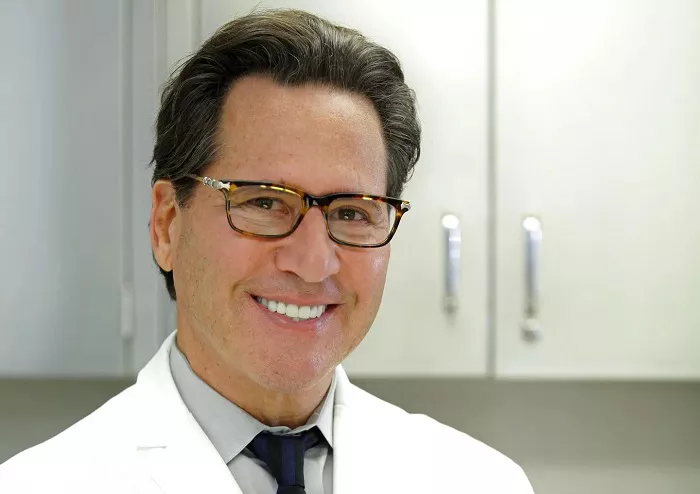Hair loss has traditionally been seen as a male concern, often leading to jokes about receding hairlines and the abundance of hair loss treatments marketed toward men. However, more women are quietly grappling with this issue, making female hair thinning one of the most common yet under-discussed cosmetic concerns. Whether triggered by postpartum changes, stress, hormone imbalances, or even the strain of a tight ponytail, the result is often the same—hair that feels thinner, less dense, and harder to manage.
One treatment gaining attention for its potential to address these concerns is Alma TED, a non-invasive, ultrasound-powered hair restoration technology. The device is generating buzz for its ability to stimulate hair regrowth without the need for needles or downtime, and it’s particularly appealing to women, many of whom are embracing it with enthusiasm. Dr. Howard Sobel, a pioneer in cosmetic dermatology, sat down to discuss how Alma TED works, why it’s proving to be a game-changer, and how it’s challenging traditional views on hair loss.
“Hair Loss Isn’t Just About Vanity”
Dr. Sobel emphasizes that the notion of hair loss being solely linked to hereditary or hormone-based factors is outdated. “There are countless contributing factors to hair loss, and we’re finally treating them with the nuance they deserve,” he says. With the Alma TED technology, hair restoration treatments have evolved, offering new hope for individuals affected by thinning hair.
Dr. Sobel’s career in dermatology began with a deep interest in both male and female pattern baldness. He completed his residency at Emory University School of Medicine, where he began exploring hair loss treatment options, including a compound developed to block the hormone DHT, believed to be a key factor in male pattern baldness. While treatments like minoxidil, which encourages blood flow to hair follicles, have been in use for years, Dr. Sobel acknowledges that hair loss is multifactorial and requires more than just one solution.
Causes of Hair Loss and Treatment Options
Dr. Sobel lists a variety of causes for hair loss, with genetics being the primary factor in male pattern baldness and women’s hair thinning typically starting in their 30s or 40s. Other contributors to hair loss include age, stress, anemia, thyroid disorders, autoimmune diseases, certain medications, nutritional deficiencies, and even pregnancy-related changes.
The Alma TED treatment is unique in its approach to hair restoration. Unlike traditional methods that often require injections or invasive procedures, Alma TED uses acoustic sound waves and air pressure to create micro-channels in the scalp, enhancing the absorption of topical treatments. This method not only promotes hair regrowth but also increases the density of individual hair strands.
How Alma TED Works
Patients can expect visible results in as little as three to four weeks, with noticeable reductions in hair shedding and improved hair density. Alma TED’s accompanying topical solution, which contains growth factors and peptides, plays a critical role in stimulating hair follicles. In Dr. Sobel’s practice, he enhances the treatment by adding exosomes derived from umbilical cord blood, which are rich in growth factors that promote hair regeneration and thickening.
Dr. Sobel compares Alma TED favorably to Platelet-Rich Plasma (PRP) therapy, another popular treatment for hair loss. While PRP involves drawing and processing the patient’s own blood before injecting it into the scalp, Alma TED delivers a more abundant dose of growth factors through the exosome-enhanced topical solution, providing a less invasive and pain-free experience.
The Advantages of Ultrasound Technology
The key advantage of Alma TED lies in its use of ultrasound-based technology. The combination of acoustic sound waves and air pressure allows for deep penetration of the topical treatment into the hair follicles, which stimulates hair growth and increases blood flow. Unlike PRP, which can be uncomfortable and requires blood draws, Alma TED is virtually painless, making it an attractive option for patients seeking a more comfortable treatment.
Dr. Sobel also notes that Alma TED is effective for all types of hair loss, but it works particularly well for androgenic alopecia, which affects both men and women. It is essential, however, that patients still have active hair follicles for the treatment to be effective.
Treatment Frequency and Results
For optimal results, Dr. Sobel recommends a series of three sessions spaced one month apart. Afterward, treatment intervals can be adjusted based on individual factors such as the patient’s age, genetic predispositions, and the severity of hair loss. Some patients may require sessions every two to four months to maintain results.
Alma TED can be used in conjunction with other hair health strategies, such as vitamin supplements, amino acids, and conditioning treatments that support hair follicles. These complementary approaches can further enhance the effectiveness of the treatment.
The Future of Ultrasound Technology in Dermatology
Beyond hair restoration, Dr. Sobel sees great promise for ultrasound technology in other areas of dermatology. He predicts that it will play an increasingly important role in non-invasive facial treatments, using exosomes to stimulate collagen production, increase skin elasticity, and reduce the appearance of fine lines and wrinkles.
Alma TED represents a significant leap forward in hair restoration technology, offering a non-invasive, effective solution for those struggling with hair thinning and loss. By combining cutting-edge science with a patient-centered approach, it has the potential to transform how we address hair health, particularly for women who have long been underserved by traditional treatments.
Related topics:
- Rosemary Oil for Hair Loss: Is It Effective?
- George Clooney Says New Hair Color Leaves Him Unrecognizable
- Experts Dispel Myths Linking Headgear to Hair Loss


